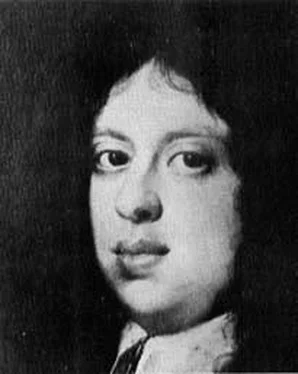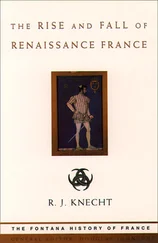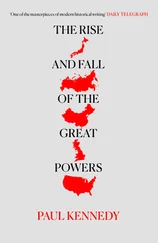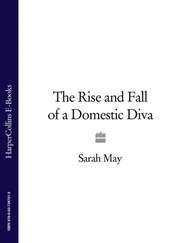Marsuppini’s bitter rival at the University was a young man of his own age, Francesco Filelfo, who was born at Tolentino near Ancona where his parents, both Florentines, were then living. Before he was twenty he had already gained a reputation as a classical scholar that enabled him to obtain an important diplomatic appointment in the Venetian service at Constantinople. Here he married the pretty daughter of his Greek tutor, John Chrysoloras, whose brother, Emmanuel Chrysoloras, had been Professor of Greek at the University of Florence. Filelfo himself came to teach in Florence at the invitation of Niccolò Niccoli who was, at first, delighted by his versatility and energy. Filelfo rushed from lecture to lecture, talking from dawn to dusk and with equal facility about Cicero and Terence, Homer and Livy, Thucydides and Xenophon. He also lectured on moral philosophy, and once a week in the Cathedral gave a public discourse on Dante. In addition to these activities he found time to write numerous epigrams and odes, speeches and histories, and to undertake translations whenever these promised to be sufficiently profitable. But after a time Niccolò Niccoli began to regret ever having asked the bustling young man with the Byzantine beard to come to Florence. Filelfo proved to be vain, ill-tempered, insolent, avaricious, prodigal and spiteful. Cosimo’s friends took to avoiding him, and in his quarrels with Carlo Marsuppini they took his rival’s side. Filelfo then courted the Albizzi and offered them his services as a master of invective. Cosimo, who had greeted him warmly on his arrival in Florence and had offered to pay his rent, was to become the most virulently savaged of all his victims.
Yet so long as the other humanists in Florence remained his friends and, what was even more important, so long as Niccolò da Uzzano was alive, Cosimo had no reason to fear that the Albizzi could mobilize forces strong enough to ruin him. Even though he was generally sympathetic towards the political views of the Albizzi, Niccolò da Uzzano had always respected the Medici and had actually been moved to tears at the funeral of Cosimo’s father. But in 1432 Niccolò himself died and, thereafter, Rinaldo degli Albizzi’s anti-Medicean plot quickly matured. Malicious stories about Cosimo, many doubtless inspired by Filelfo, began to circulate in the streets of Florence: he dressed so plainly, it was said, only the more easily to avoid accusations about his ill-gotten riches; his supposed sympathy for the people was no more than the calculated duplicity of the self-seeker; had he not been heard to say that the people never did anything honest except for their own advantage or out of fear? His well-publicized donations to religious charities and building funds were utter hypocrisy, the conscience-money of a usurer, given with an eye to his family’s glory and nothing more; did he not always make sure that the Medici insignia were prominently displayed on any building that he had paid for? Why, he had emblazoned ‘even the monks’ privies with his balls’! One night in the early months of 1433 the doors of Cosimo’s palace were smeared with blood.
Once again, as in the autumn of 1430 when he had gone to Verona, Cosimo withdrew from Florence, this time to his estate il Trebbio in the Mugello where he stayed for several months. 4Meantime, he discreetly transferred huge sums of money from his bank in Florence to his branches in Rome and Naples, giving orders for bags of coins to be desposited for safe keeping with the Benedictine hermits of San Miniato al Monte and the Dominican friars of San Marco, where they would be safe from confiscation should the Albizzi move against him.
While Cosimo was away in the country, Rinaldo degli Albizzi set about manipulating the elections to the new Signoria which was due to meet in September. He completed the work with unobtrusive skill. Of the nine Priori chosen, seven were definitely prepared to support him, while only two, Bartolommeo Spini and Jacopo Ber-linghieri, were believed to be possible Medici adherents. The man elected as Gonfaloniere was Bernardo Guadagni whose debts Rinaldo had settled in order to render him eligible for office. 5
During the first week in September, Cosimo who was still in the Mugello, received an urgent summons from Guadagni to return to the city immediately. There were, he was told, ‘some important decisions to be made’. He decided to face them.
Cosimo arrived back in Florence on 4 September 1433. That afternoon he went to the Palazzo della Signoria to see the Gonfaloniere , Bernardo Guadagni, who was evasive and uncommunicative: the ‘important decisions’ which had necessitated Cosimo’s return from the Mugello would be discussed when the Signoria met in council three days later; in the meantime there was no way of accounting for the rumours of impending trouble which had been circulating in the city for the past few days.
After leaving the Gonfaloniere , Cosimo went to sec one of the Priori whom he believed to be a friend and from whom he received the same kind of vague reassurance. He then went to his bank, no doubt to arrange for the transfer of further sums from Florence. After that he could do nothing but await the imminent meeting of the Signoria .
When he arrived at the Palazzo della Signoria on the morning of 7 September the session had already begun. As the captain of the guard escorted him up the stairs, he passed the shut door of the Council Chamber. Soon after being locked inside his little cell he was told that he had been ‘arrested on good grounds, as would be soon made clear’.
Two days later, on 9 September, the huge Vacca boomed in the belfry above his head to call the citizens of Florence to a Parlamento in the Piazza. As the low, mooing notes of the bell sounded through the city, crowds of people began to converge upon the Piazza in response to its summons; but armed supporters of the Albizzi halted them at the entrances to the square and all those who were known to be, or suspected of being, Medici adherents were denied entry. Looking down from the window of his cell, Cosimo afterwards claimed to have counted no more than twenty-three heads in front of the ringhiera , the ground-floor stone terrace upon which the Priori were standing. In the name of the Signoria these few citizens were asked by the Notaio delle Riformagioni if they agreed to the establishment of a Balìa , a committee of two hundred members ‘to reform the city for the good of the people’. Obediently they gave their approval and a Balìa was accordingly appointed.
Although Rinaldo degli Albizzi now seemed to be in full control of the government, the Balìa could not be persuaded to recommend the execution of Cosimo as he strongly urged it to do. Its discussions were apparently stormy and indecisive, some members supporting the proposal that Cosimo should be beheaded, others arguing that banishment would be punishment enough, one or two suggesting that the prisoner ought to be released. It was clear that many members of the Balìa were reluctant to go to the extremes advocated by the Albizzi not only for fear of the violent disapproval of those thousands of Florentines who, though for the moment intimidated, still looked to the Medici as their champions, but also because his arrest had already called forth strong protests from abroad. The Marquis of Ferrara, a customer of the Medici bank, had intervened on Cosimo’s behalf. The Venetian Republic, also financially indebted to him, had immediately dispatched three ambassadors to Florence who did all in their power to secure his release; and if, after a heated talk with Rinaldo, they failed to do so, their arrival in Florence, as Cosimo said himself, had ‘a great effect on those who were in favour of executing’ him. Rinaldo also had a visit from Cosimo’s old friend, Ambrogio Traversari, Vicar-General of the Camaldolite Order, and supposedly the representative of an even more influential customer of the Medici bank, Eugenius IV, the austere son of a Venetian merchant, who had succeeded Martin V as Pope two years before. By this time Rinaldo had succeeded in bringing a charge of treason against Cosimo by having two of his supporters tortured on the rack. One of these, Niccolò Tinucci, a celebrated notary and occasional poet, had been forced by the city rackmaster to confess that Cosimo had intended to enlist foreign help in bringing about a revolution in the city. Neither Traversari nor the Venetian ambassadors believed in this confession; nor did most of the citizens of Florence. Rinaldo, indeed, was gradually being forced to conclude that he would have to be content with a sentence of banishment rather than the death penalty which his henchman Francesco Filelfo was so insistently demanding.
Читать дальше











